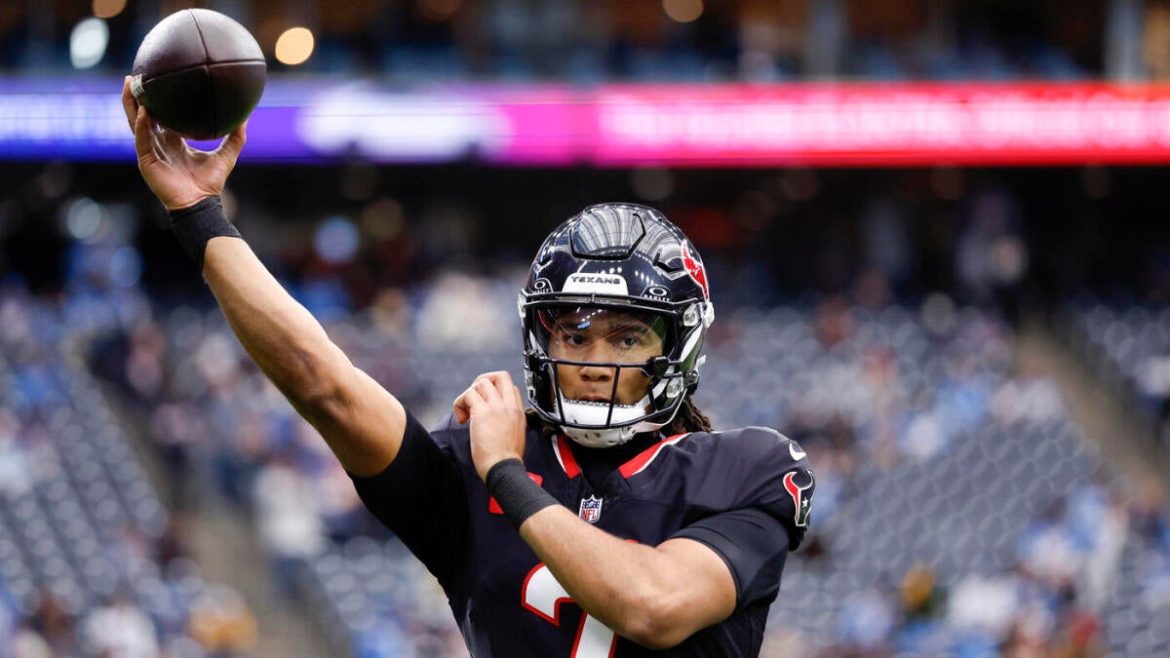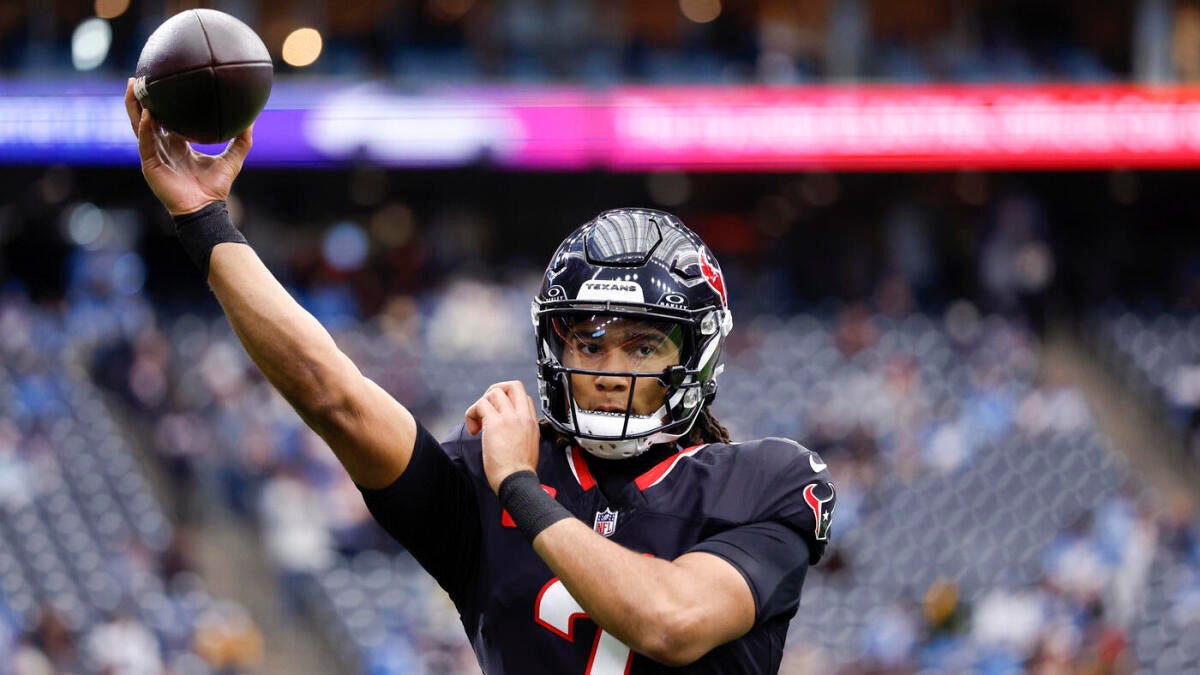C.J. Stroud’s Shoulder Soreness: Timeline and Context
The Houston Texans QB C.J. Stroud in his third year has been at the center of attention due to a recurring issue with his right shoulder. The concern began during the Texans’ Organized Team Activities (OTAs) in early summer, where reports surfaced that Stroud was dealing with soreness and tightness in his throwing shoulder. This soreness initially kept him from participating in throwing drills for several OTAs sessions.
Texans coach DeMeco Ryans characterized the issue as “general soreness” and “extra precaution,” and consistently emphasized that there were “no concerns” about Stroud’s long-term health or ability to return to play fully. Media accounts reinforced this narrative, portraying the soreness as a minor but bothersome issue rather than a serious injury. The uncertainty early on stemmed from the lack of precise details about the nature or location of the soreness, sometimes described initially as a potential pectoral problem but later clarified to be shoulder-related.
Impact on Stroud’s Participation During Offseason
Throughout the offseason and OTA period, Stroud’s workload was notably limited. Despite being a Pro Bowl quarterback coming off a successful season where he helped Houston clinch consecutive AFC South titles, Stroud was often held out of throwing exercises. This conservative approach by the Texans reflected their priority to protect their franchise quarterback, especially ahead of the grueling regular season schedule.
Stroud’s absence from throwing drills raised questions and concern among fans and analysts, who wondered if the Texans might be downplaying a more serious issue or if Stroud’s season preparation was compromised. Yet, coach Ryans remained steadfast in his public statements dismissing any significant cause for worry.
The Return to Throwing in Mandatory Minicamp
The turning point came during the Texans’ mandatory minicamp, where Stroud threw passes for the first time in nearly a month. This event marked a significant milestone, signaling his return to full throwing activities and a likely return to normalcy in his conditioning. Observers and media noted that Stroud looked capable and committed during these practices, alleviating fears about lingering shoulder problems.
Reports from multiple sources, including NFL Network’s Ian Rapoport and statements from the Texans’ staff, confirmed that the shoulder soreness was indeed a temporary setback. The healing and rest taken during the OTA period appeared to have done their job, allowing Stroud to re-engage in his quarterback responsibilities without restrictions.
Broader Implications for the Texans
Stroud’s temporary setback underscores the inherent challenges NFL teams face in managing the health of key players, especially quarterbacks. The Texans’ prudence in handling Stroud’s shoulder soreness reflects a modern trend where teams opt for caution to avoid long-term complications. This conservative approach sometimes invites speculation but aims at protecting player longevity.
By proactively delaying Stroud’s throwing activities and closely monitoring his condition, the Texans reduced the risk of aggravated injury. The successful return during minicamp bodes well for Houston’s prospects, as a healthy Stroud remains the cornerstone of their offense.
What This Means for Fans and Analysts
For Houston Texans fans, the intermittent reports of Stroud’s shoulder worries could have caused unease, especially given his pivotal role on the team. However, the recent positive developments should offer reassurance that the team’s management and medical staff are effectively addressing health issues with an eye toward optimal performance during the season.
For analysts, Stroud’s case is an example of balancing transparency with strategic discretion. The “general soreness” label, while vague, functions to protect player privacy and team strategy, while the cautious approach to his practice availability avoids risk without unnecessarily alarming the public.
Conclusion: A Careful Comeback and a Positive Outlook
C.J. Stroud’s journey through shoulder soreness to his eventual return to throwing demonstrates effective injury management and the complexities of preparing a franchise quarterback. The Texans have shown a judicious process that prioritizes Stroud’s long-term health over short-term concerns. His successful return in the mandatory minicamp is encouraging and positions Houston favorably as they transition into the next phase of their season.
As Stroud resumes full throwing activities, the key for the Texans will be to continue monitoring his condition, balancing workload with recovery, and maintaining the confidence of the team and fans. This cautious but optimistic approach could be integral to sustaining Stroud’s high-level performance and the Texans’ competitive prospects moving forward.





